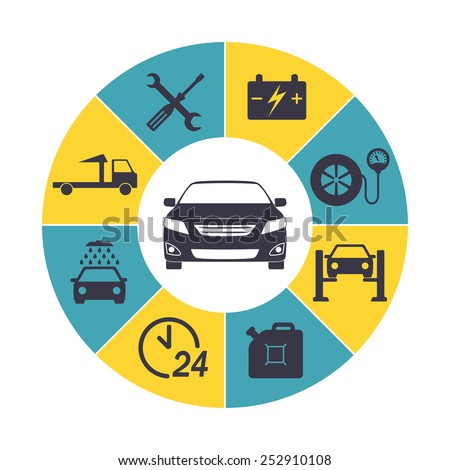Comprehending The Relevance Of Your Auto'S Warning Signals: What They In Fact Stand For
Comprehending The Relevance Of Your Auto'S Warning Signals: What They In Fact Stand For
Blog Article
Write-Up By-Vinson Shepherd
When you're behind the wheel, those beautiful warning lights on your control panel can be a bit perplexing. Do you recognize what they're trying to inform you regarding your car's wellness? Comprehending the significance of these lights is crucial for your safety and security and the durability of your vehicle. So, the following time one of those lights pops up, wouldn't you wish to decipher its message accurately and take the needed steps to resolve it?
Common Warning Lights and Interpretations
Identify typical caution lights in your auto and understand their definitions to guarantee risk-free driving.
One of the most normal warning lights consist of the check engine light, which indicates issues with the engine or exhausts system. If this light comes on, it's vital to have your vehicle inspected without delay.
The oil pressure alerting light suggests low oil pressure, requiring prompt interest to prevent engine damages.
A flashing battery light might recommend a damaged charging system, possibly leaving you stranded if not attended to.
The tire pressure monitoring system (TPMS) light informs you to low tire pressure, influencing lorry security and gas performance. Ignoring this could cause harmful driving problems.
The abdominal light shows a problem with the anti-lock braking system, compromising your capability to quit rapidly in emergency situations.
Lastly, the coolant temperature level cautioning light warns of engine overheating, which can cause severe damage if not fixed swiftly.
Understanding you can look here will aid you address problems without delay and preserve secure driving problems.
Value of Prompt Interest
Comprehending the typical warning lights in your vehicle is just the very first step; the relevance of immediately addressing these warnings can not be stressed enough to guarantee your safety and security when driving.
When a warning light brightens on your control panel, it's your car's way of connecting a potential issue that needs interest. Overlooking these warnings can bring about extra serious problems in the future, endangering your safety and security and possibly costing you more in repairs.
Prompt attention to advising lights can prevent break downs and crashes. As an example, a blinking check engine light could indicate a misfire that, if left unattended, can cause damage to the catalytic converter. Addressing this without delay can conserve you from a pricey repair service.
Likewise, a brake system cautioning light might indicate low brake fluid or worn brake pads, critical parts for your safety and security when driving.
Do It Yourself Troubleshooting Tips
If you see a warning light on your dashboard, there are a few do it yourself troubleshooting pointers you can attempt before seeking professional help.
The primary step is to consult your auto's handbook to understand what the specific warning light suggests. Sometimes detailer can be as basic as a loose gas cap setting off the check engine light. Tightening the gas cap might deal with the trouble.
Another usual issue is a low battery, which can set off numerous alerting lights. Examining the battery links for deterioration and ensuring they're safe and secure may repair the trouble.
If a warning light persists, you can attempt resetting it by disconnecting the auto's battery for a couple of mins and then reconnecting it. In addition, examining your lorry's liquid levels, such as oil, coolant, and brake fluid, can aid repair warning lights associated with these systems.
Conclusion
In conclusion, understanding your auto's warning lights is essential for keeping your automobile running efficiently and safely. By promptly dealing with these informs and understanding what they indicate, you can prevent costly repair work and prospective malfunctions.
Bear in mind to consult your car's manual for certain information on each warning light and take action as necessary to ensure a trouble-free driving experience.
Remain informed, stay risk-free when driving!
